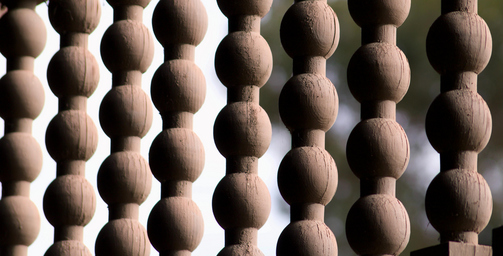Catharina Månsdotter, Karin Månsdotter in Swedish and Kaarina Maununtytär in Finnish, was a Swedish daughter of a rank-and-filer of the royal infantry. She was born on November 6, 1550. We do not know a lot about her family, other than that her parents were from Uppland in the Swedish East Coast. Her mother Ingrid was of a peasant origin and presumably died when Catharina was very young. However, Catharina was also the royal wife of the Swedish king Eric XIV. How did the girl of certainly meager origins rise to be the queen of the Swedish Empire? And why is she still regularly called the queen of the Finns, despite being of Swedish origin? Let us shed some light in the exceptional story of Karin Månsdotter.
The Background
The famous Swedish King, Gustav I Vasa, had four sons. The eldest was Eric, born to a different mother from the rest. He inherited the crown in 1560, but his time in reign 1560-1568 was far from quiet. His younger brother John was named the Duke of Finland, the easternmost part of the Swedish kingdom, in 1556. John was de facto ruler of Finland, but by the Acts of Arboga (1561) was forbidden to practice independent foreign policy.
Because of the different geographic situation of the lands they were ruling, the brothers had difficult disagreements: Eric, the king, was waging war against Denmark and Poland over the Baltic areas, while John, being worried about the threat of Russia from the East, wanted to make peace with Poland and cooperate against the Russian menace, while gaining some personal footing in northern Baltic. John began to fraternize with the Polish by lending money and marrying one of the sisters to the Polish king. By doing all this, he was acting against the will of his brother, who started to suspect John of plotting treachery with the aid of some Finnish nobles. In summer 1563, the crisis finally escalated to a point where John was captured and imprisoned.
Göran Persson (on the right) was a son of a bishop, and the feared secretary of Eric XIV. He was the head of the King’s spies and oversaw the capture of John and the murders of many noblemen. He was executed in a gruesome way. Georg von Rosen: Eric XIV, King of Sweden (1871), from the collections of Swedish Nationalmuseum.
The struggle for power between the brothers led to several nobleman losing their heads, as they were accused of conspiracy against the king. Eric made a mistake when he murdered a couple of men of very high standing: for the sympathizers of John, the murders of the Stures in 1567 were the last nail in the king’s coffin. If the king’s state of mental disorder had not been clear before, it was such after he accidentally ordered his guards to kill his old teacher among the accused nobleman.
In this somewhat chaotic situation, Eric made official his betrothal to Catharina, a commoner woman.
From Peasant to a Queen
King Eric XIV first saw Catharina when she was selling nuts in the grand marketplace of Stockholm, or so the popular story goes. This story is likely to be completely erroneous, as it is plausible that he met her in the house of a mutual acquaintance, Gert Cantor. Little invented plot twists like these are only too frequent in the history of Eric and Catharina, and mainly for two reasons: reason one is that chroniclers have wanted to fill in the voids of the story, and the other is the (national) romantic interest shown for the tale of agitated hearts. When the story is made a little bit more interesting, it serves better as a myth, an auricular tradition that compares with those of other great nations.
Catharina bore four children for Eric in 1566, 1568, 1570 and 1572, two of them during imprisonment. In July 1567, Catharina’s position as a concubine was changed to that as the queen of the kingdom. In September, the brothers of his husband, John and Charles, started an insurrection, elected John as the new king and imprisoned Eric and Catharina. Eric was arraigned for many reasons, his alleged madness among them, but the fact that his queen was of commoner origin did not alleviate suspicion among those nobles who rooted for John.
The pictures drawn by Eric during his captivity are the only surviving pictures of her drawn by her contemporaries. Catharina’s commoner background was one of the excuses behind John’s coup d’etat. Drawing by Eric XIV of Sweden, c. 1575.
What followed for Catharina was years of imprisonment in several castles. Most significantly for the Finns, both Eric and Catharina spent a short time in Turku castle in 1570-1571. Up to our days the story of the dents on the windowsill of Eric’s prison is told to the quests visiting the castle. According to the tale, Eric was able to see her wife and children through the small window while they were staying in a croft at the other side, and his elbows left their marks on the sill. The couple was continuously moved to different castles, from Kastelholm in Åland to Gripsholm in Swedish Södermanland, and to Västerås in 1573. The couple was allowed to stay together to varying degrees. In Gripsholm, another baby boy named Arnold was born. He died very soon, but as the king was afraid of the consequences of more possible heirs being born, the royal couple was roughly separated in next June. Catharina travelled back to Turku Castle in 1573 with her two remaining children, and this probably marked the beginning of dark and grim end for the distraught Eric, who spent the last years of his life without the person who had presumably kept him somewhat sane. Eric died in Spring 1577.
A Guiltless Prisoner
While being a prisoner in name, Catharina was never locked in a prison and actually led a reasonably comfortable life: she could probably move around the castle, she received new, warm clothes and could burn candles (an expensive commodity at the time) all through the dark nights. The worst setback she had must have been when her son was taken away from her and deported to Poland – in the fear that he might be able to pose as an heir to the crown. We do not know whether the news of Eric’s death was saddening or relieving, but it meant that she was free to go. The sons of Gustav I Vasa are known to always pay due respect to the former royal wives, and Catharina got a domain from Liuksiala, located in the Finnish parish of Kangasala. She moved there with her daughter Sigrid and a supporting entourage.
During the Cudgel War 1596-1597, Catharina’s estate was one of the few houses spared from pillaging in the area. This hints towards the underlying respect the peasants had for the former queen (of peasant origin, nonetheless), or towards the general goodwill Catharina enjoyed among her neighbors.
The Legacy of Catharina
Catharina with a crown, the Finnish coat of arms and two pages is depicted in the stained-glass window in Turku Cathedral. The features of Catharina are largely fictitious. Wladimir Swertschkoff in 1870.
Catharina is a figure that has indeed stimulated the imagination of countless generations. In Sweden she is known as one of the only three queens of commoner origins, and the story of a girl raising from the common ranks to an exalted queen is – as we all know – universally exciting. For this reason, Catharina has a special place in the hearts of painters and artists especially, celebrated as a beautiful, humble, altruistic and loyal wife who stands by her king no matter what. The truth is that we cannot know a lot about her personality, and many of the romantic stories are most likely artistic inventions. However, we have some evidence to support the fact that King Eric XIV was truly dedicated to his wife, and vice versa. During their captivity, Eric drew some charming pictures of a woman wearing a crown in his notebook – these pictures are believed to depict Catharina.
Catharina had only one son who made it past his early childhood. Gustav, who was taken away in 1575, wandered around in Europe and met his sister Sigrid during the coronation of his cousin in Krakow in 1587. He was also able to meet with Catharina in Tallinn in 1596. Catharina had problems recognizing her son, all grown-up and unable to speak Swedish as he was. He was forever forbidden from entering the Swedish kingdom, and his colorful yet woeful life came to an end as a prisoner in a Russian small town in 1607. On the other hand, Sigrid married nobleman Henrik Klasson Tott, and their son Åke Henriksson Tott was to become a great Finnish war hero.
For the longest time, Catharina, who died in 1621, was buried in the family grave of the Totts in Turku Cathedral. In 1860’s her remains were moved to a place more suitable for a queen, coinciding with the renovations of the cathedral. Today, she rests in a sarcophagus, that together with a stained-glass window and an original bust decorates her own chapel in the Turku Cathedral.
Catharina rests in Turku Cathedral. Photo by Hajotthu in Wikimedia Commons, under CCA-Share Alike 3.0 license.
Interestingly, while king Eric’s grave was opened and investigated in Sweden in 1958, Swedish newspaper Aftonbladet brought up an idea: would it not be nice to join the couple together again? When the archbishop in Turku at the time was asked that question, he quite blatantly asked why should Catharina be moved to Västerås and not vice versa? Almost all the members of Eric’s family were buried in Turku anyway. Allegedly, there were no more inquiries by the Swedish delegate. Catharina still lies in her own chapel in Turku Cathedral, as if to say: So, you thought you could come and take our only queen when you yourself have so many? The myth of Catharina Månsdotter lives on.
This article is based on the book Turun linnan kolme Katarinaa by C. J. Gardberg 1986/1995, Otava. Gardberg was the leading name in the research of the medieval Turku.
All the pictures are from Wikimedia Commons and in the public domain in the United States and their country of origin.


